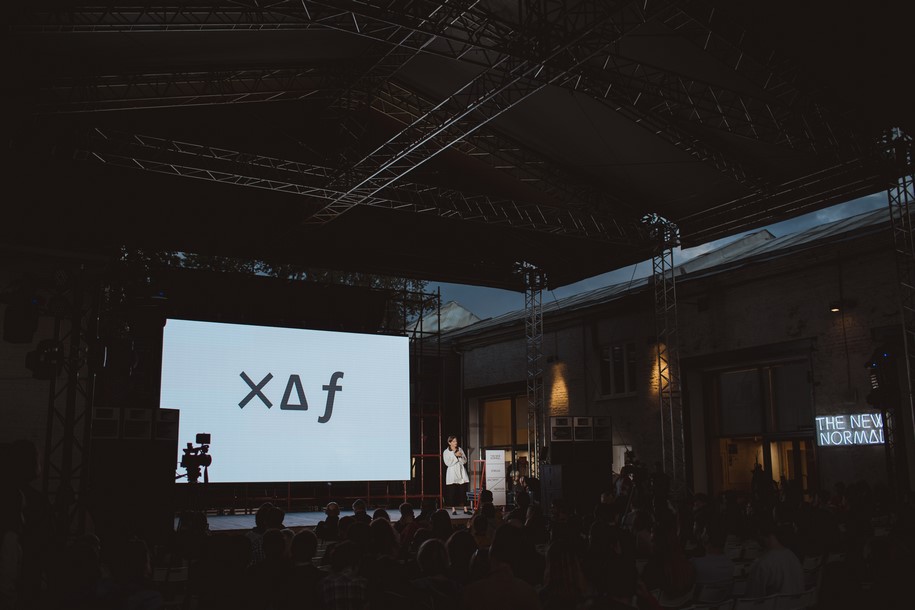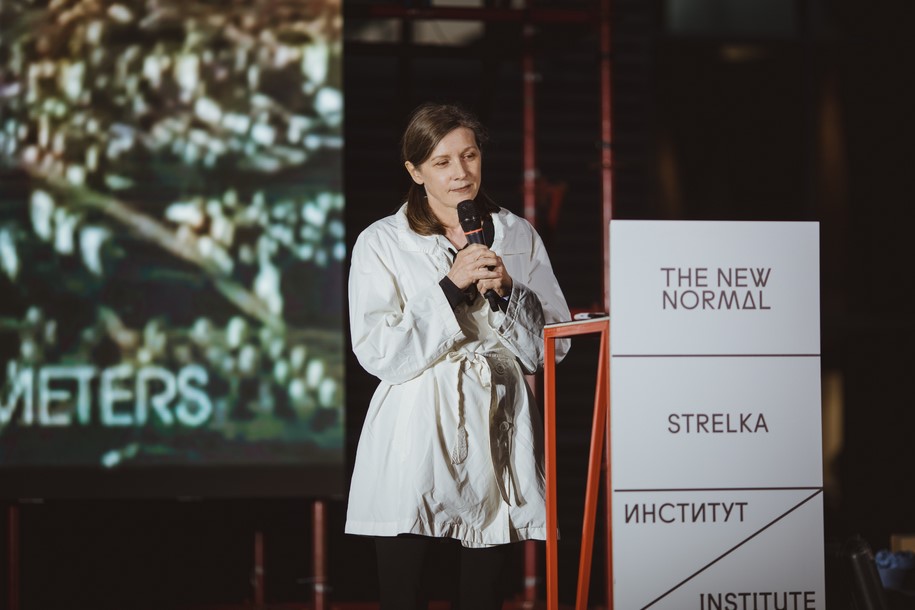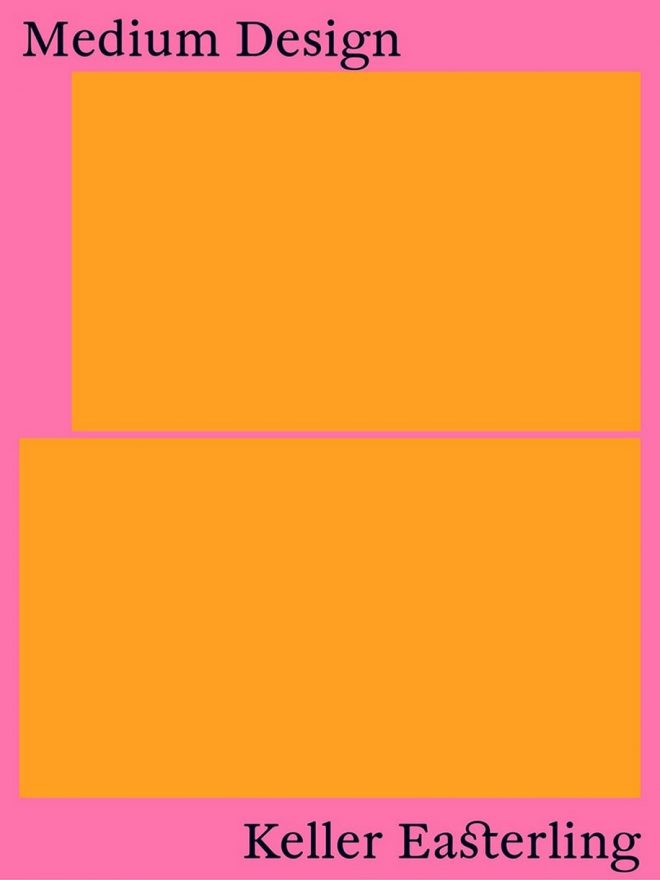Strelka Press has published the latest essay by architect, writer, and Yale professor Keller Easterling. From Medium Thinking to Medium Design, Easterling explains how to treat space itself as an information system and use space to prompt productive thought about both spatial and non-spatial problems.
Privileging declarations, right answers, proofs, and universals, culture is often banging away with the same blunt tools that are completely inadequate to address contemporary chemistries of power.
On the flip side of these logics, Medium Design offers no dramatic manifestos where things are new or right. Instead it only rehearses a habit of mind that has been eclipsed.
Even at a moment of digital ubiquity, Medium Design treats space as an information system and a broad, inclusive mixing chamber for many social, political, technical networks. And just as it inverts the typical focus on object over field, it may also invert some habitual approaches to problem solving, aesthetics and politics.
Medium Design offers no dramatic manifestos where things are new or right. Instead, it simply rehearses a habit of mind that has been eclipsed.
Below is an excerpt from Medium Design:
Medium Design: It is not what you think. It is not new. It is not right. It is not magic. It is not free. It does not happen. It does not always work.
The oncologist follows not only the tumor but also the chemical fluctuations in surrounding tissues. The actor in the theatre transmits information not only through words but also through interdependent actions. The architect sees not only buildings with shapes and outlines but also the matrix of activities that inflects them. The geologist does not merely taxonomize specimens but rather reads them as traces of a process.
Still, while this medium thinking is practiced in many disciplines, it is perhaps under-rehearsed in the face of more dominant or ingrained cultural habits. Culture is good at pointing to things and calling their name but not so good at describing the relationships between things or the repertoires they enact. It privileges declarations, right answers, litigious proofs, universals, elementary particles and telos. It circles modernist scripts that celebrate freedom and transcendent newness — narrative arcs that bend toward a utopian or dystopian ultimate. This collective mind that looks for the one or the one and only is so often organized like a closed loop.
And since the loop that only circulates compatible information cannot abide contradiction, it also often lashes out with a binary fight against any challenger. Fighting is essential to being right. There is no growth or ideation without argumentation or debate. There is no literature without conflict. Favoring successive rather than coexistent thoughts or practices, the new right answer must kill the old right answer. The newest redemptive technology will make you free, but the freedom of one group must rob another of its freedom. And the fight should build to a revolution or an apocalyptic burnout. Cue the brooding music.
Oscillating between loops and binaries, an unnecessarily violent culture, having eliminated the very information it needs, is often banging away with the same blunt tools that are completely inadequate to address perennial problems and contemporary chemistries of power. A bully is elected, a migration of refugees swells in number, a financial crisis makes properties worth less than nothing, an industrial disaster kills thousands, shorelines flood due to global warming, or teenagers join ISIS. If economic and military templates of causation provide no explanation, if new technologies do not provide the solution, if the consensus surrounding laws, standards or master plans provide no relief, little sense can be made of the problem. Assuming that these problems are simply impossibly deadlocked or unresponsive to rational thought, even the smartest people in the world stand with hand to brow.
(…)
Inverting the authority given to declarations, master plans, standards or laws, medium design discovers extra political and aesthetic capacities in indeterminacy, discrepancy, temperament and latency in organizations.
IT’S NOT WHAT YOU THINK
The most robust forms come from a deep synthesis of mental habits. There is more information in messy, mixed, exchanges between completely different species of thought and endeavor. Still, while the non-modern may be the real departure from prevailing thought, humans are consistently fooled into thinking that it will somehow not have a radical edge or a dangerous silhouette. Even when it is clear that the exclusive or pure embrace of the new and the modern makes culture dumber, the impure embrace remains under-rehearsed.
Might some of the world’s seemingly intractable or unresponsive problems — the superbugs and losing games — respond to medium design?
With the ability to detect and manipulate indeterminacy, discrepancy, temperament and latency,
is there a way to productively engage problems that have evaded cultural understanding or that are unresponsive to familiar approaches?
Bringing into focus the dispositional macro-organizational attributes of spatial arrangements and changing the terms of the game may deliver any number of conventional and unconventional design precipitants — solids as well as adjustments to matrix. Maybe the documents of medium design are unusual mixtures of popular stories and technical specifications or explicit architectural instructions — like a cross between a novel, a building, a platform, an actuarial table, a film and a blockchain. Maybe heterogeneous mixtures of new and familiar technologies can form impure mixtures that, by being information rich, reduce violence and develop cultural capacities beyond the small fraction of potentials now in play.
MEDIUM THINKING
Media/Medium
Medium thinking is not confined to the study of communication, and it gives no more attention to digital technologies than any other. Those media theorists who consider the broadest historical sweeps refer to the earliest uses of the word media to describe the elemental atmospheres like water, air, earth or fire.6 In one of these recent synthetic philosophies of media by John Durham Peters, Harold Innis, Marshall McLuhan, Regis Debray, Nikolas Luhmann or Vilem Flusser join an array of thinkers in the arts and sciences including Herman Melville, Jacob von Uexküll, George Sanders Peirce, Walter Benjamin, Gregory Bateson, Bruno Latour and Arjun Appadurai among many others. “Media,” Peters argues, “are vessels and environments, containers of possibility that anchor our existence and make what we are doing possible.”7
Medium design considers the registration of information that exceeds the idea of “message.”
Innis or McLuhan are present as one example of those who, in a culture focused on declaration, foreground the ways in which communication is inflected by its medium. In a lifetime of “dirt research,” Innis researched the capacities and myriad cultural forms associated with, for instance, the, stone, paper, clay on which the message was carried across time and in different milieus.8
McLuhan’s popularizing of “the medium is the message” makes it easier to look at medium as a cultural project. When he writes that “juicy piece of meat carried by the burglar to distract the watchdog of the mind,” he is arguing that what the medium is saying sometimes prevents us from seeing what
the medium is doing.9 Still medium design considers the registration of information that exceeds the idea of “message.”
References
6 Some of these theorists would include: John Durham Peters, The Marvelous Clouds: Toward a Philosophy of Elemental Media (University of Chicago, 2015), In Media Res and Understanding Media; Antonio Somaini, “Walter Benjamin’s Media Theory: The Medium and the Apparat,” Grey Room, 62, Winter 2016, 6-41; and Francesco Casetti and Craig Buckley, “Genealogies of the Excessive Screen,” forthcoming.
7 John Durham Peters, The Marvelous Clouds: Toward a Philosophy of Elemental Media (University of Chicago, 2015), Introduction: In Media Res.
8 Harold Innis, Empire and Communications (Voyageur Classics, 2001).
9 Marshall McLuhan, Understanding Media: The Extensions of Man (New
Keller Easterling is an architect, writer, and professor at Yale University. She is also a member of The New Normal core faculty at Strelka Institute.
Her most recent book, “ Extrastatecraft: The Power of Infrastructure Space,” examines global infrastructure networks as a medium of polity. Another essay, “The Action is the Form: Victor Hugo’s TED Talk,” published by Strelka Press in 2012, previews some of the arguments in “Extrastatecraft.”
We thank Strelka Institute for kindly providing us the text and the images.
READ ALSO: Reflections on Greek postwar architecture by Panayotis Tsakopoulos / designed by Natassa Pappa


